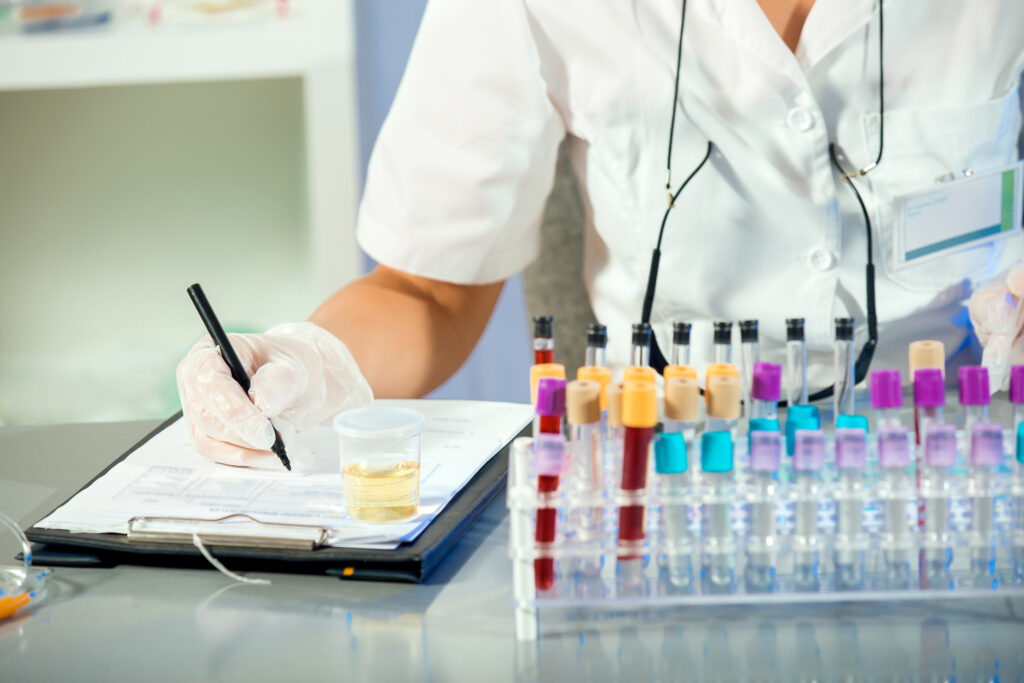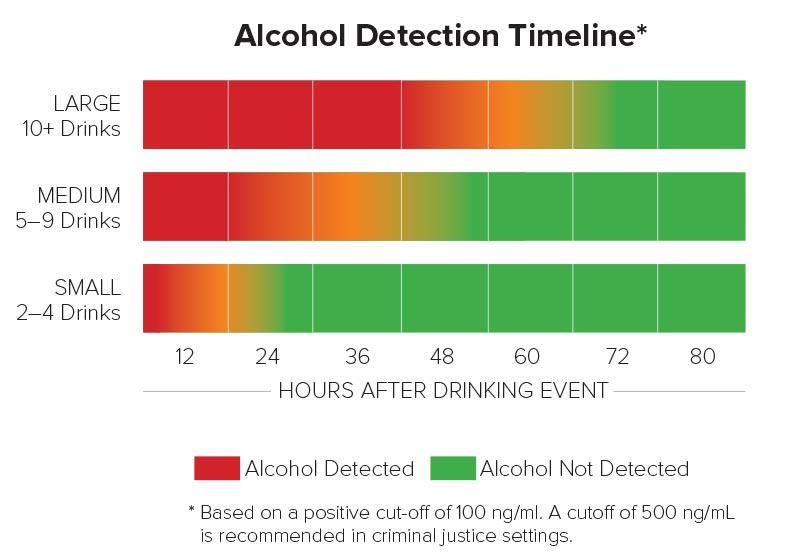EtG Testing – Know the Facts

An EtG (ethyl glucuronide) test is used to detect alcohol in urine. However, when it comes to truly serving as a determinant of if a client has consumed alcohol, it often falls short. When weighing the pros and cons of EtG vs Continuous Alcohol Monitoring or remote breath testing, it is important to know the facts.
EtG has a high rate of false negatives
- The 80-hour detection window for EtG is largely a myth. In most cases, EtG is not detectable in urine beyond 24-36 hours.
- Even for dangerously large drinking events, detection of EtG in urine begins declining after 40 hours.

Cost vs. Benefit
- Because of the high false negative rate after 24 hours, EtG testing must be done every 24 to 48 hours, or four times per week.
- The cost is $20 to $25 per test, thus averaging $320 to $400 per month.
- A Monday test will not pick up a Friday night drinking event; the risk of clients drinking around the test increase significantly when a savvy client figures out these detection windows.
Hair EtG has limited application in criminal justice
- Hair EtG can potentially detect repeated, large drinking events over a period of time, but cannot be used to distinguish a particular drinking event.
SAMHSA warnings about EtG
- SAMHSA has issued a written advisory about the reliability of EtG testing to determine alcohol consumption and its application in a criminal justice setting.
- SAMHSA has warned that hair EtG testing has too long of a window of detection for most defined applications and that hair care products can influence test results.
Resources
Borucki K., Schreiner R., Dierkes J., Jachau K., Krause D., Westphal S., Wurst F.M., Luley C. and Schmidt-Gayk H. Detection of Recent Ethanol Intake With New Markers: Comparison of Fatty Acid Ethyl Esters in Serum and of Ethyl Glucuronide and the Ratio of 5-Hydroxytryptophol to 5-Hydroxyindole Acetic Acid in Urine. Alcohol Clin Exp Res. 2005 May; 29(5):781-7.
Wojcik M.H. and Hawthorne J.S. Sensitivity of Commercial Ethyl Glucuronide (EtG) Testing in Screening for Alcohol Abstinence. Alcohol and Alcoholism. Published on behalf of Medical Council on Alcohol Volume 42, issue 4, pages 317-320. Published in print July 2007 | ISSN: 0735-0414. Published online March 2007 | e-ISSN: 1464-3502 | DOI: http://dx.doi.org/10.1093/alcalc/agm014
Substance Abuse and Mental Health Services Administration. (2012). The Role of Biomarkers in the Treatment of Alcohol Use Disorders, 2012 Revision. Advisory, Volume 11, Issue 2.
Society of Hair Testing. (2014). 2014 Consensus for the Use of Alcohol Markers in Hair for Assessment of both Abstinence and Chronic Excessive Alcohol Consumption.
*Copies of research articles are available upon request.


